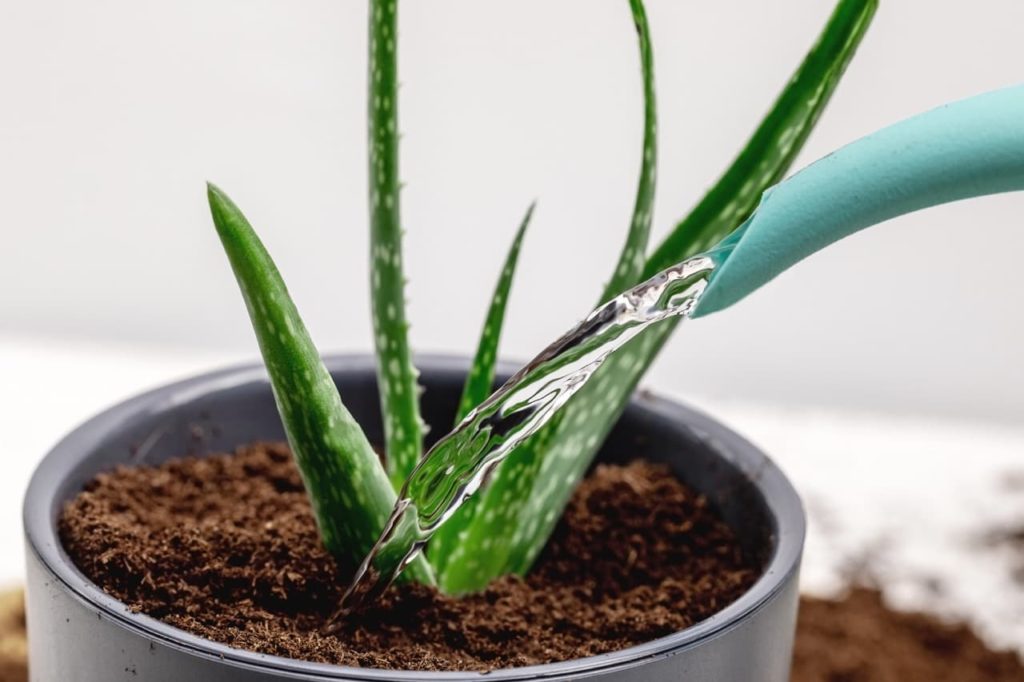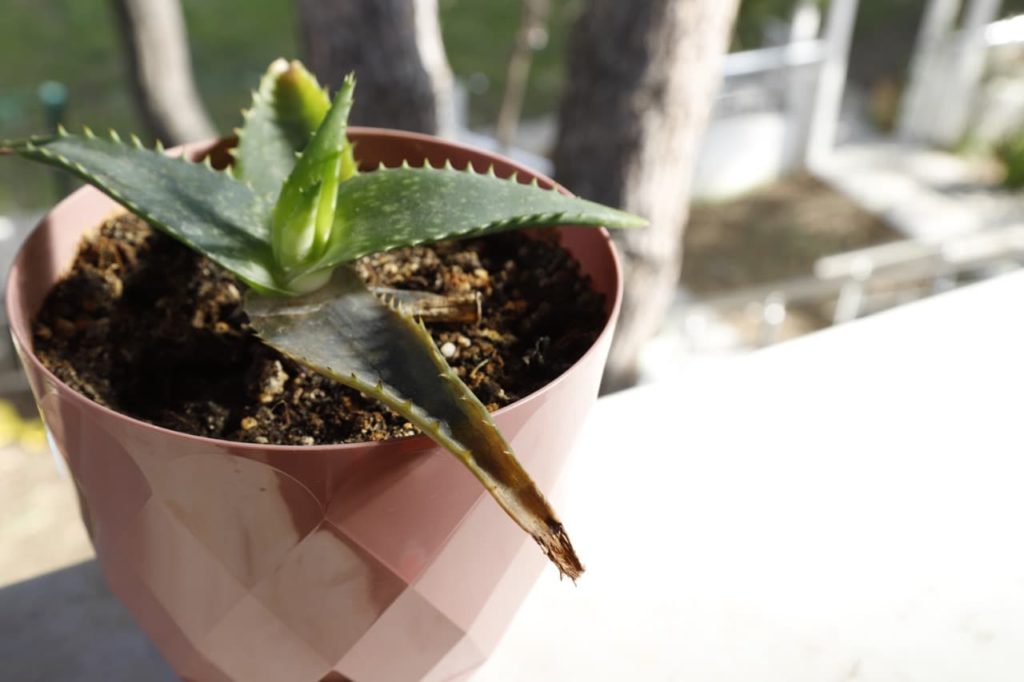Watering Your Aloe Plant? Don’t Make This All Too Common Mistake

SUCCULENTS > ALOE > WATERING

Elizabeth is a Permaculture Garden Designer, Sustainability Consultant and Professional Writer, working as an advocate for positive change. She graduated from the University of St. Andrews with an MA in English and Philosophy and obtained a Diploma in Applied Permaculture Design from the Permaculture Association.
Reviewed By PETER LICKORISH

Peter is a Horticulture Lecturer and self-employed Horticulturist, with a passion for diverse areas of the industry - from garden design to the science behind plant growth and propagation. He has completed the Royal Horticultural Society’s Master of Horticulture (MHort) Award and lectures on RHS courses at Bedford College.
Contributions From LES PEARCY

Les Pearcy is the Chairperson for The Haworthia Society and has been a member since its formation in 1986. The society focuses on the Aloaceae family and strives to find a better understanding of the plants in this genus, including Aloe. Les has been growing succulents for over 50 years.

With decades of experience growing cacti and succulents, David is the owner of Coach House Cacti, a specialist seller based in Dorset. He has won multiple Gold medals at various RHS Flower Shows throughout the years, with his achievements featured online. David is also a member of the British Cactus and Succulent Society.
IN THIS GUIDE
ALOE GUIDES
Aloe vera is a plant that is relatively easy to grow as a houseplant in the UK.
It is pretty tolerant of some neglect and can handle someone who might not always remember to water it in a timely fashion.
“When a plant isn’t growing or has died, the normal reason will be you’ve either watered it too much or not enough,” shares Les Pearcy from The Haworthia Society.
“It is a mistake to think that they do not need watering because they are desert plants, however, an Aloe sitting in wet compost can easily lose its roots which will allow fungal diseases to set in.”

Here are the basic watering guidelines for Aloe vera that you need to know:
- Aloe vera should be watered when the top few centimetres of the growing medium feel dry.
- Water Aloe vera more in summer and less in winter.
- How frequently you will water depends on a number of factors including temperature, humidity and light levels.
- There are signs to look out for that will tell you if you have watered too little or too much (see below).
- Water Aloe vera from above with rainwater where possible.
“Watering is done for most [of] the year, more in the warmer summer months and much less in winter,” adds Les.
“This is very dependent on the growing conditions. Plants on a windowsill will probably want a bit more water in the winter months than those growing in a greenhouse.
“Always allow the compost to dry out before watering again.”

If you pop your Aloe container in a bowl, any water that drains from the bottom will collect, and soak slowly back into the soil.
This is a good way of ensuring the plant has enough water: simply leave it to soak for 10-15 minutes each time you water, then discard any water that hasn’t been absorbed.
With A. vera, vibrant green and a noticeable firmness when pushed indicate a healthy plant, full of gel.
If your Aloe begins to droop, feels mushy to the touch, or develops crackly, dry, brown sections, this is an indication that you may not be watering enough.
Let’s take a closer look at the watering guidelines to help you make sure you don’t make any mistakes.
| Difficulty | Easy |
| Equipment Required | Watering can, aloe plant |
| When To Water | Every 1-2 weeks in summer, once a month in winter |
When To Water Aloe
Aloe vera is a succulent plant that, once established, is very tolerant of drought.
However, this does not mean that you should make the mistake of thinking that it does not need watering at all.
Like most plants, even drought-tolerant ones, Aloe vera does need sufficient water to survive.

“Watering, either too much or too little, is one of the most common issues I see with those growing succulents,” shares David Ennals, the Owner of Coach House Cacti.
It is important to water when the growing medium is dry and to provide sufficient water so that the plant can replenish its reserves.
Remember, as a succulent, the plant stores water within its tissues as a means of coping with prolonged dry periods in those areas where it grows naturally.
It is best to water Aloe vera plants earlier in the day rather than later so that any water splashed onto the plant has the opportunity to dry off before the temperatures fall.
How Often Should You Be Watering Aloe?
“Like most succulent plants, water aloe more during the warmer months and less in winter, making sure they are in a free-draining compost,” says Les.
As a rough rule of thumb, you might expect to water an Aloe vera kept as a houseplant indoors every week or two during the summer months, but far less frequently, perhaps only once a month, in the winter.
However, it is not possible to give precise timings for when and how often to water an Aloe vera plant because this will be different for each location and each home.

How frequently you will need to water your plant will depend on temperatures, humidity levels and how much sunlight the plant is receiving where it is placed in your household.
The higher the temperatures, the lower the humidity and the brighter and sunnier the location, the more water these plants will typically require.
So, rather than relying on the timings mentioned online or sticking to a strict watering regime, it is important to look and learn from the plants themselves to see whether you are watering correctly or whether some adjustment is required.
Signs Of Underwatering
If your Aloe vera is not getting enough water, the leaves will often become wrinkled and may shrivel up and turn a little yellow or brown on the ends.
Signs Of Overwatering
If an Aloe vera has been over-watered, its leaves may turn pale or yellowish and may ultimately become mushy and brown.
You can also look at the growing medium and its feel, appearance and weight.

If the growing medium is light and looks or feels dry, then it may be time to water once more.
The key is to make sure that we add sufficient water without saturating the growing medium or leaving it waterlogged.
Excess water must always be able to drain away freely.
How To Water Aloe Correctly
Water Aloe vera plants from above, to the surface of the compost, rather than bottom watering, as these plants can be susceptible to problems caused by mineral build-up in the growing medium.
Always use rainwater where possible or filtered or distilled water if only treated tap water is available.
“I like to use a watering can with a very long, narrow spout and no rose for watering cacti and succulents, including A. vera,” shares Peter Lickorish, a Horticultural Consultant.

“This avoids the problem of heavy glugs of water compacting compost, squashing out air and reducing its ability to drain.
“Also, it allows water to be directed to the compost, rather than accumulating on the leaves of the plant, where it can encourage rotting.”
These are fairly tolerant plants and you can generally get away with some mistakes when watering them.
However, make sure that you address any problems as quickly as you can to keep your Aloe happy and healthy.
